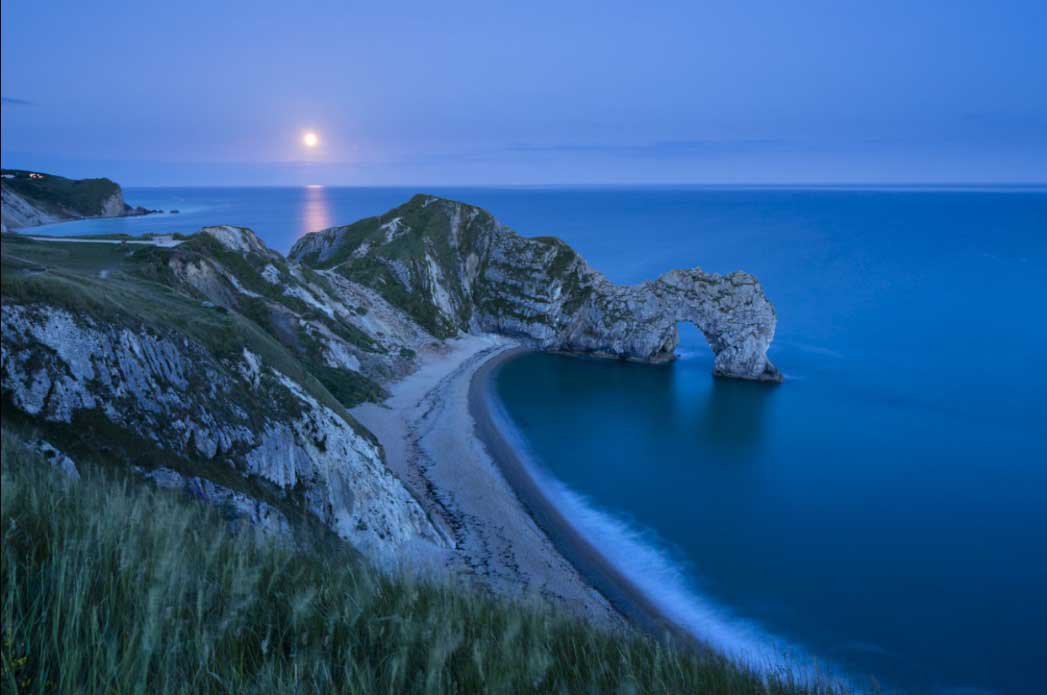A Blue Moon typically happens once every two to three years, but tonight’s event is truly extraordinary. On August 19, 2024, the sky will host a rare Super Blue Moon, a combination of two celestial phenomena. Not only is this the second full moon in a calendar month—making it a Blue Moon—but it’s also a Supermoon, appearing about 30% brighter and 15% larger due to its close proximity to Earth. The last time we witnessed such a spectacle was in August 2023.
As a lunar month lasts around 29.5 days and a calendar month can range between 28 to 31 days, it creates opportunities for two full moons within a single month. Tonight is one of those rare occasions.
If you’re planning to photograph this unique Blue Moon, Canon ambassador David Noton shares his five essential tips to help you capture stunning images of this rare lunar event.
01 Download the right apps to be in-the-know
The sun’s position in the sky at any given time varies significantly with latitude and season. However, the moon’s movement is governed by its complex elliptical orbit around the Earth, leading to monthly, rather than seasonal, variations. This results in noticeable differences in the timing of the moon’s appearance and its trajectory through the sky.
Fortunately, we no longer need to rely on cumbersome tables to track the moon’s behaviour. Modern technology allows us to use apps directly on our phones. The Photographer’s Ephemeris is particularly useful for providing moonrise and moonset times, bearings, and phases. Meanwhile, Photopills offers comprehensive information on the moon’s position, helping you plan your photographic or observational activities with precision.
02 Invest in a lens with optimal zoom
On Monday, one of the key challenges we’ll face is shooting the moon large in the frame so we can see every crater on its pockmarked surface.
This task is typically reserved for astronomers with powerful telescopes, but with the right equipment, you can achieve impressive results. For this kind of shot, a long telephoto lens on a full-frame DSLR or mirrorless camera with around 600mm of focal length is ideal, depending on your composition. For this shoot, you could use the Canon EOS R5 Mark II paired with the RF 100-500mm f/4.5-7.1L IS USM lens, or the Canon EOS R3 with the RF 600mm f/11 IS STM lens. If you’re using a DSLR, the Canon EOS 5D Mark IV with an EF 200-400mm f/4L IS USM Ext. 1.4x lens remains an excellent choice.
03 Use a tripod to capture the intimate details
As you frame up your shot, one thing will become immediately apparent: lunar tracking is incredibly challenging as the moon moves through the sky surprisingly quickly.
As you’ll be using a long lens for this shoot, it’s important to invest in a sturdy tripod to help capture the best possible image. Although it will be tempting to take the shot by hand, it’s important to remember that your subject is over 384,000km away from you and even with a high shutter speed, the slightest of movements will become exaggerated.
04 Integrate the moon into your landscape
Whilst images of the moon large in the frame can be beautifully detailed, they are essentially astronomical in their appeal. Personally, I’m far more drawn to using the lunar allure as an element in my landscapes, or using the moonlight as a light source.
The latter is difficult, as the amount of light the moon reflects is tiny, whilst the lunar surface is so bright by comparison.
Up to now, night photography meant long, long exposures but with cameras such as the Canon EOS R5 Mark II now capable of great low light performance, a whole new nocturnal world of opportunities has been opened to photographers.
05 Master the shutter speed for your subject
The most evocative and genuine use of the moon in landscape portraits results from situations when the light on the moon balances with the twilight in the surrounding sky. Such images have a subtle appeal, mood and believability.
By definition, any scene incorporating a medium or wide-angle view is going to render the moon as a tiny pin prick of light, but its presence will still be felt.
Our eyes naturally gravitate to it, however insignificant it may seem. Of course, the issue of shutter speed is always there; too slow an exposure and all we’ll see is an unsightly lunar streak, even with a wide-angle lens.
On a clear night, mastering the shutter speed of your camera is integral to capturing the moon. Exposing at 1/250sec @ f8 ISO 100 (depending on focal length) is what you’ll need to stop the motion from blurring. And if you are to get the technique right, you might even be able to see the twelve cameras that were left up there by NASA in the 1960s!



